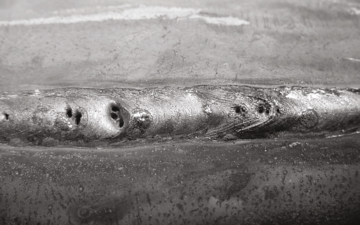The Science Behind Porosity: A Comprehensive Guide for Welders and Fabricators
Comprehending the intricate devices behind porosity in welding is vital for welders and fabricators striving for impeccable craftsmanship. As metalworkers dig right into the depths of this phenomenon, they uncover a world regulated by different elements that influence the formation of these tiny spaces within welds. From the make-up of the base products to the complexities of the welding process itself, a plethora of variables conspire to either aggravate or relieve the presence of porosity. In this thorough guide, we will certainly unravel the scientific research behind porosity, discovering its effects on weld quality and introduction progressed strategies for its control. Join us on this trip via the microcosm of welding blemishes, where accuracy satisfies understanding in the quest of remarkable welds.
Recognizing Porosity in Welding
FIRST SENTENCE:
Examination of porosity in welding discloses crucial understandings into the stability and quality of the weld joint. Porosity, characterized by the presence of cavities or voids within the weld steel, is an usual worry in welding processes. These gaps, if not properly resolved, can endanger the architectural stability and mechanical buildings of the weld, resulting in potential failures in the completed item.

To discover and quantify porosity, non-destructive screening approaches such as ultrasonic testing or X-ray evaluation are often employed. These strategies allow for the identification of internal flaws without compromising the stability of the weld. By analyzing the size, form, and circulation of porosity within a weld, welders can make informed choices to enhance their welding processes and attain sounder weld joints.

Elements Influencing Porosity Development
The event of porosity in welding is influenced by a myriad of aspects, ranging from gas protecting performance to the complexities of welding specification setups. Welding criteria, including voltage, existing, take a trip speed, and electrode kind, also effect porosity formation. The welding strategy utilized, such as gas metal arc welding (GMAW) or secured metal arc welding (SMAW), can affect porosity formation due to variants in warm circulation and gas coverage - What is Porosity.
Results of Porosity on Weld Quality
Porosity formation dramatically jeopardizes the architectural stability and mechanical homes of welded joints. When porosity exists in a weld, it produces spaces or cavities within the product, decreasing the overall stamina of the joint. These gaps work as stress concentration points, making the weld extra prone to fracturing and failure under tons. The existence of porosity also compromises the weld's resistance to deterioration, as the entraped air or gases within the spaces can react with the surrounding setting, resulting in destruction over time. Furthermore, porosity can hinder the weld's capacity to withstand stress or effect, additional threatening the general quality and reliability informative post of the bonded structure. In essential applications such as aerospace, automobile, or architectural building and constructions, where safety and longevity are critical, the detrimental effects of porosity on weld quality can have serious consequences, stressing the significance of minimizing porosity with correct welding methods and treatments.
Methods to Decrease Porosity
Additionally, utilizing the proper welding parameters, such as the correct voltage, present, and take a trip speed, is critical in preventing porosity. Keeping a constant arc length and angle during welding likewise aids reduce the chance of porosity.

Utilizing the suitable welding technique, such as back-stepping or employing a weaving movement, can likewise aid disperse warmth equally and reduce the chances of porosity formation. By implementing these methods, welders can successfully minimize porosity and produce top quality welded joints.

Advanced Solutions for Porosity Control
Carrying out cutting-edge innovations and ingenious techniques plays an essential function see this website in accomplishing premium control over porosity in welding processes. Furthermore, employing sophisticated welding strategies such as pulsed MIG welding or customized atmosphere welding can likewise aid mitigate porosity problems.
An additional sophisticated option includes the use of sophisticated welding tools. Making use of equipment with integrated functions like waveform control and innovative power sources can boost weld quality and lower porosity dangers. Moreover, the implementation of automated welding systems with exact control over specifications can significantly decrease porosity flaws.
Furthermore, integrating sophisticated monitoring and inspection innovations such as real-time X-ray imaging or automated ultrasonic testing can assist in detecting porosity early in the welding procedure, permitting for immediate rehabilitative actions. view it now Overall, integrating these sophisticated options can greatly boost porosity control and improve the total quality of welded elements.
Verdict
Finally, recognizing the science behind porosity in welding is necessary for welders and fabricators to generate top quality welds. By determining the factors affecting porosity formation and applying techniques to reduce it, welders can boost the general weld high quality. Advanced services for porosity control can additionally improve the welding procedure and make sure a strong and trustworthy weld. It is necessary for welders to continually enlighten themselves on porosity and execute best methods to accomplish optimum outcomes.